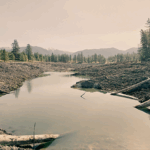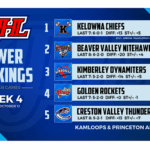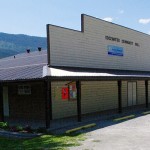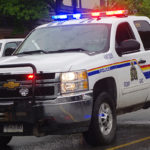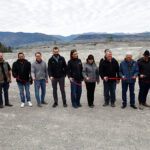Home »

Water, sewer rates up; solid waste rate down

Kimberley City Council Report
By Nowell Berg
On November 14, City of Kimberley council held its bi-monthly meeting.
Water and sewer user rates set to increase, solid waste rate decreases
Council approved city administration’s request to increase water utility user rates by two per cent starting January 1, 2018.
According to Chief Financial Officer Jim Hendricks, “Water and sewer utilities are not funded from taxes, they’re funded from user fees.” The city tries to keep user fee rate increases pegged to the Municipal Pricing Index (MPI), which council set at two per cent.
Also January 1, the sewer user fee is set to increase five per cent. Hendricks said this increase is due to the new $34 million waste water treatment facility set for construction in 2020. Hendricks said the city is “hoping to get 83% grant funding on that.” The city would be responsible for funding the remaining 17%, which will be over $5 million.
“To fund that $5 million we’re anticipating borrowing and to fund the debt payments associated with that borrowing we need to ramp up the sewer user fees,” said Hendricks. The five per cent increase will be for each year starting in 2018 and running through to 2022, then in 2023 Hendricks expects the sewer user fee increase to drop back to the MPI of two per cent.
As a result of the 2017 changes to garbage collection, mainly the reduction from two vehicles to one, the city has found enough savings to decrease the solid waste user fee by 10%. “That’ll go to off-set the increases in water and sewer,” said Hendricks.
He also noted the new side loading garbage truck and collection bins should arrive in April 2018. Once the new collection system is in place, the city hopes to realize additional savings that could result in the solid waster user fee “dropping” further.
The city will conduct extensive communication with residents regarding significant changes to garbage pick-up in the spring.
Dogs running at large continue to pose problems
While it is not unusual to see deer with fawns and bears in town, the biggest animal problem continues to be dogs running at large.
According to the October Animal Control Report presented to council, 12 unleashed dogs were running around town. The Animal Control Enforcement Officer issued three verbal warnings and nine $75 tickets to residents who let their dog run at large.
Four dogs were impounded and two were designated “vicious” with verbal warnings issued to owners.
During October, bylaw enforcement also focused on preparing for winter. This initiative was to ensure “recreational vehicles, including trailers and boats, and unattached trailers were removed from the streets in anticipation of the first snow storm.
Keeping the streets clear of these vehicles is necessary so city crews have the ability to “set the windrow locations for the season.”
In order to get streets cleared of unnecessary vehicles, bylaw enforcement issued 203 written warnings to residents asking them to remove recreational vehicles from city streets.
The bylaw report notes there was “a very good rate of compliance.”
Council approves Sidewalk Replacement Policy
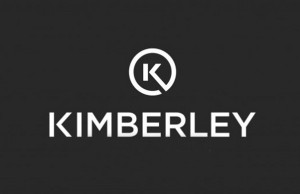 Recent discontent with the removal of sidewalks along Norton Avenue spurred city Administration to develop a Sidewalk Replacement Policy.
Recent discontent with the removal of sidewalks along Norton Avenue spurred city Administration to develop a Sidewalk Replacement Policy.
According to Chief Administrative Officer Scott Sommerville, “We [the city and council] felt that our residents would appreciate a written policy rather than a verbal policy, and proceeded with creating a Sidewalk Replacement Policy that rationalizes the decision-making process.”
When a sidewalk in town is identified as needing repair, Operations Department staff conducts a survey to determine if it should be repaired or removed. Staff will consider pedestrian safety, proximity to schools, volume of traffic on the street, access to trails and storm water drainage issues.
The policy states, “Prior to removing a sidewalk, the Operations Department will contact adjacent property owners to inform them of the pending sidewalk removal.”
“The city had been budgeting to remove sidewalks for the last few years, and deleting sidewalks that were in disrepair and deemed unnecessary rather than replacing them,” said Sommerville.
He noted two important parts of the policy. First, the policy establishes “a local area service.” This allows residents “who wish to have a sidewalk and are willing to cost-share with the city” the opportunity to petition neighbours. If a minimum of 50% of property owners agree to pay for a sidewalk, then the city will make provisions to have it brought before council for approval and included in the budgeting process.
Second, “In cases where residents have contributed to sidewalks in the past and the sidewalk has passed it’s expected service life, the policy clarifies that this does not establish their right to have a sidewalk in perpetuity,” said Sommerville.
Benchland continues to draw community response
Since the last council meeting (Oct. 23), the city received 13 letters or emails from residents commenting on the proposed Marysville Benchland zoning issue.
Of the 13 letters or emails sent to the city and presented to council, seven indicated they support the zoning of the Benchland for light industrial purposes.
Five emails were opposed to any changes to the areas zoning, and one email recognized the need for industrial development in Kimberley, but not at the Benchland.
Individual councilors may have received additional communication from residents that was not sent directly to the city.
Kimberley city council meets twice monthly. All meetings start at 7 p.m. and are open to the public. Check the city’s website here for the meeting agenda. Click on the 2017 folder and follow the link.
The next council meeting will be Monday, November 27.
It’s your city; get involved.
e-KNOW
